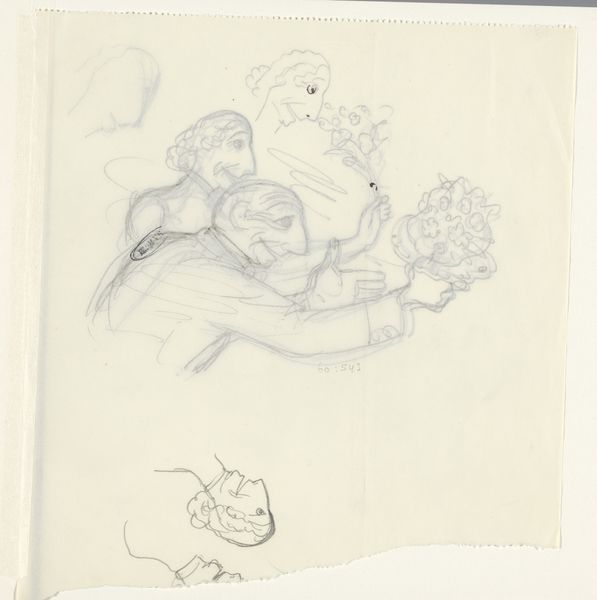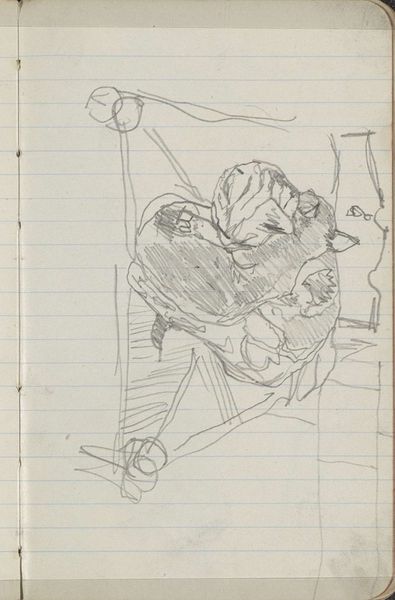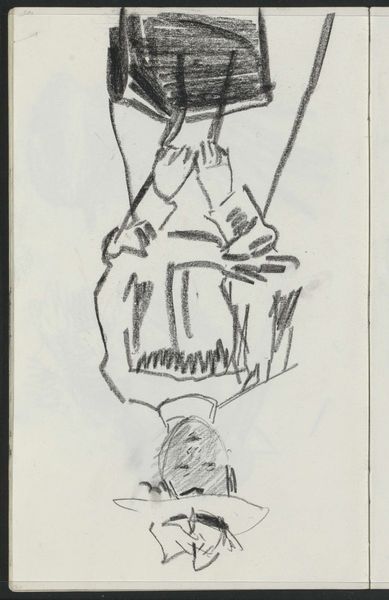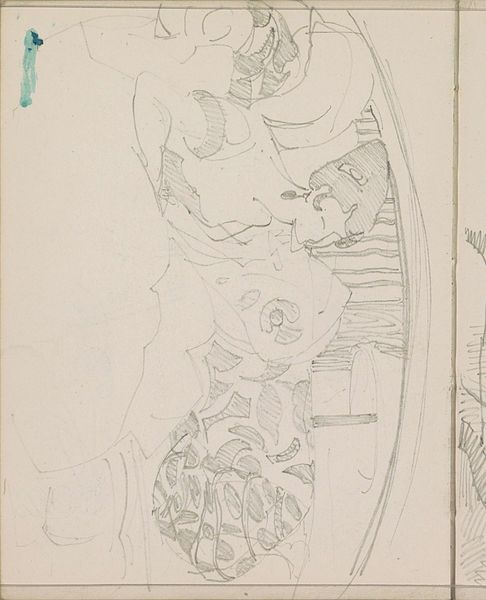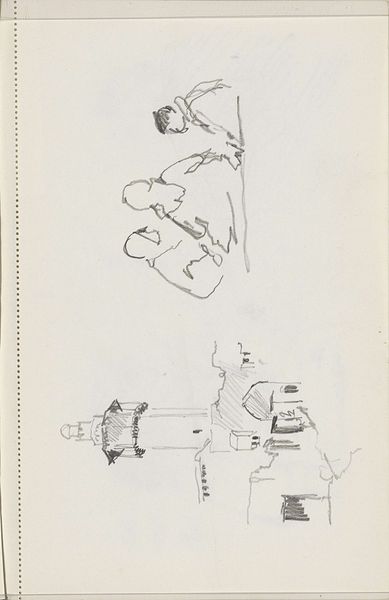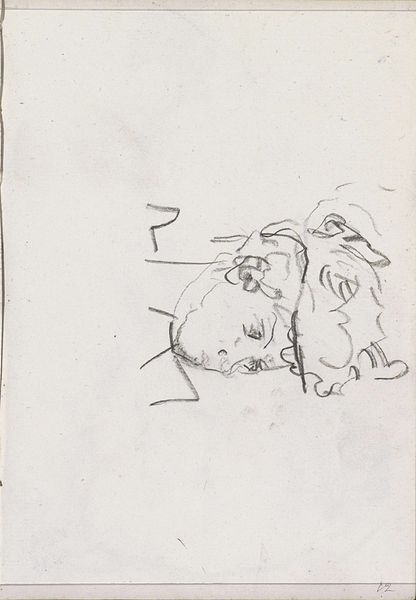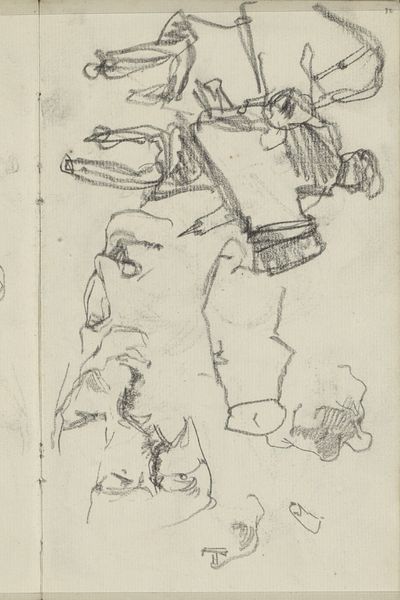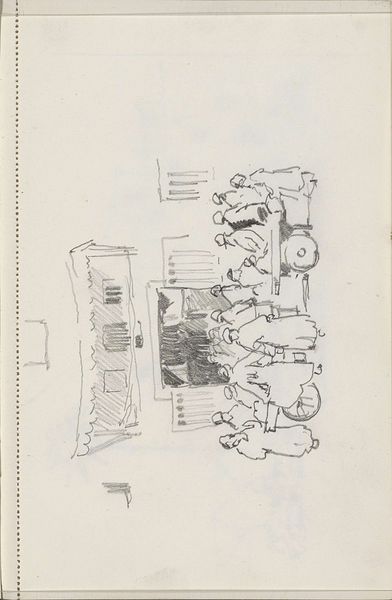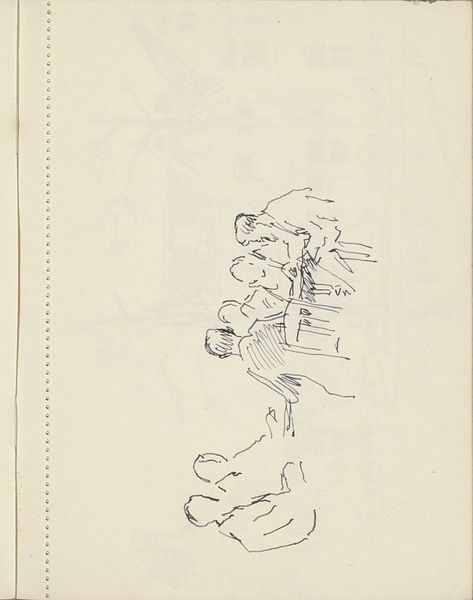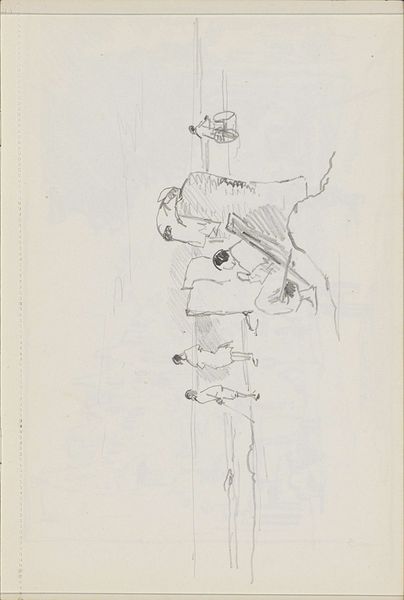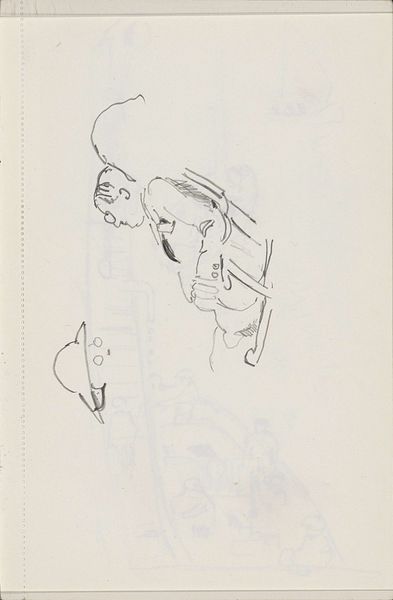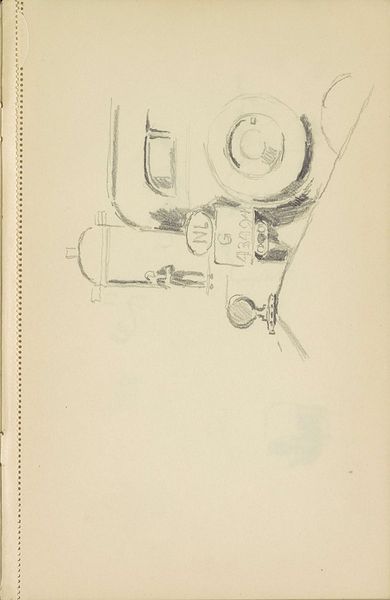
drawing, pencil
#
portrait
#
drawing
#
comic strip sketch
#
narrative-art
#
flower
#
cartoon sketch
#
figuration
#
personal sketchbook
#
idea generation sketch
#
ink drawing experimentation
#
pen-ink sketch
#
pencil
#
sketchbook drawing
#
storyboard and sketchbook work
#
sketchbook art
#
initial sketch
Dimensions: height 211 mm, width 252 mm
Copyright: Rijks Museum: Open Domain
Curator: Editor: We're looking at "Ontwerp voor een wenskaart voor 1937 van Leo Gestel en An Overtoom", created in 1937. It's a pencil and possibly ink drawing. It feels... almost unsettling with the exaggerated figures, yet clearly meant as a celebratory card. What strikes you most about this piece? Curator: I’m particularly interested in the materials and the process implied here. This isn't just an image; it’s a proposal, a blueprint almost, for mass production. It speaks to the commercialization of art, even at the level of a simple greeting card. What does the method of reproduction mean for our understanding of "art" in this period? Editor: That’s a really interesting angle. I was so focused on the individual aesthetic that I overlooked its intended mass appeal. The almost cartoonish style, was it perhaps intended for a specific demographic or a reflection of available printing technologies at the time? Curator: Exactly! Consider the labor involved – the initial sketch by Gestel and Overtoom, and the unseen labor that follows to reproduce and distribute this image on a larger scale. How does understanding this process affect your perception of the artwork’s value? Is it diminished because it's “just” a greeting card? Editor: I think I was initially seeing it as a unique artistic expression. But reframing it in terms of production, labor, and commercial intent definitely adds layers of complexity. It challenges the conventional definition of art as solely high-minded creation. Curator: It underscores the blur between art and craft, and the political dimensions embedded in what we consume daily. I now look at it knowing about the process and the intended wide distribution, with the understanding of artistic creation’s entanglement within broader socioeconomic systems. Editor: It gives new perspective on the relationship between art, industry and access. Thank you.
Comments
No comments
Be the first to comment and join the conversation on the ultimate creative platform.
